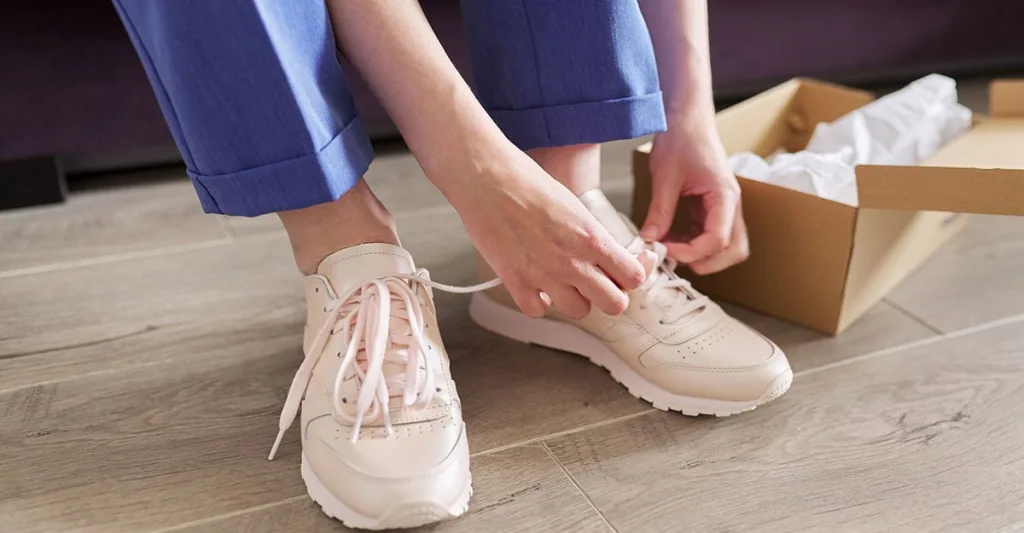Nursing shoes have evolved significantly over the years, adapting to the demanding needs of healthcare professionals who spend long hours on their feet.
From humble beginnings to the advanced designs of today, the evolution of nursing shoes mirrors the progression of medical care and the growing awareness of the importance of foot health in the nursing profession.
Let’s examine how nursing shoes have changed over time and how innovations have transformed shoe options for nurses.
Early beginnings of nursing shoes
The beginnings of nursing shoes can be traced back to the early days of modern nursing, which emerged in the mid-19th century with nursing figures like Florence Nightingale. During this period, nursing was even more demanding than it is today, and it often required long hours of standing and walking in challenging hospital environments. The footwear worn by nurses at this time reflected the practical needs of the job rather than comfort or style.
In the late 19th and early 20th century, nursing shoes were characterized by their simplicity and functionality. They were typically made from durable materials like leather or canvas and chosen for their ability to withstand the rigors of hospital work environments.
Nurses during this era would typically wear low-heeled shoes or boots that covered the foot and provided adequate support for walking and standing. The emphasis was on functionality rather than fashion, reflecting the serious and dedicated nature of nursing.
The primary purpose of these early nursing shoes was to provide basic protection for the feet. They needed to be sturdy enough to endure frequent use and provide some level of insulation and protection from spills, sharp objects, and the elements.
As medical practices advanced and nursing became more specialized, there was a growing recognition of the toll that extended shifts could take on nurses' feet. This awareness sparked innovations aimed at improving comfort and reducing the risk of foot-related ailments.
The rise of comfort: Cushioning and support
As nursing evolved into a recognized profession with standardized training and protocols, there was a growing awareness of the impact of prolonged standing and walking on foot health. This drove the development of more comfortable and supportive nursing shoes.
In the mid-20th century, nursing shoes began to incorporate features like cushioned insoles and supportive arches. Brands began designing shoes that catered specifically to healthcare professionals that provided comfort and addressed common foot issues, such as plantar fasciitis and heel pain.
Advancements in materials and manufacturing techniques allowed for the development of lightweight yet durable nursing shoes. Polyurethane and EVA foam became popular choices for midsoles, offering superior shock absorption and energy return. This innovation was crucial in reducing fatigue and discomfort during long shifts.
The modern era brings advanced technology and customization
In recent decades, nursing shoes have benefited greatly from technological advancements. Brands like Asics, Brooks, and New Balance have introduced footwear with advanced features such as gel cushioning, moisture-wicking fabrics, and ergonomic designs. These technologies enhance comfort, promote better posture, and reduce strain on the legs and back.
Slip-resistant outsoles have become a standard feature in nursing shoes, ensuring stability and safety in environments where spills and wet surfaces are common. This improvement has significantly reduced the risk of workplace accidents and injuries among healthcare professionals.
In addition, the evolution of nursing shoes has created an emphasis on customization and personalization. Many brands now offer shoes with removable insoles, allowing nurses to insert orthotics or additional cushioning as needed. This flexibility ensures that each nurse can find a shoe that fits their unique foot shape and provides optimal support. This shift reflects a broader recognition of the importance of personal style and expression in the workplace.
Future directions: Innovation and sustainability
Looking ahead, the future of nursing shoes appears poised for further innovation. Advancements in materials, including sustainable and eco-friendly options, are likely to shape the next generation of footwear for healthcare professionals. Technologies like 3D printing may enable custom-made shoes that perfectly conform to an individual's foot anatomy, further enhancing comfort and performance.
Future nursing shoes are likely to incorporate sustainable materials, such as organic cotton, recycled polyester, and eco-friendly synthetic fibers. These materials can reduce the environmental footprint by minimizing resource consumption and lowering greenhouse gas emissions compared to traditional materials. Manufacturers may increasingly use plant-based materials like bamboo, hemp, or cork for shoe components such as insoles, linings, and outsoles. These materials are renewable and biodegradable, offering a sustainable alternative to petroleum-based plastics and synthetic rubbers.
The integration of smart technology into nursing shoes holds promise for monitoring vital signs, gait analysis, and injury prevention. These innovations have the potential to revolutionize how nurses interact with their footwear, providing real-time feedback and insights to optimize comfort and productivity.
Final thoughts
The evolution of nursing shoes reflects broader trends in healthcare and technological advancement. From basic utility to sophisticated comfort and performance, nursing shoes have undergone significant transformation to meet the evolving needs of nurses.
As the healthcare industry continues to evolve, so will the footwear designed to support those dedicated to patient care. By prioritizing comfort, safety, and innovation, the future of nursing shoes promises to empower healthcare professionals and enhance their ability to provide compassionate and effective care.
No matter where you are in your nursing journey, Nurse.com is here for you. Join the NEW Nurse.com community to meet other nurses, find support, build your career, discover events and groups that foster growth, and organize your nurse life in one place.







